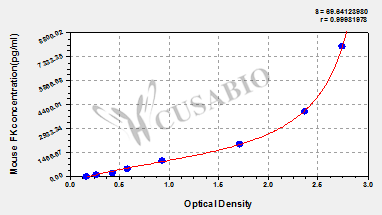The product CSB-E04559m is a sandwich ELISA kit developed to measure concentrations of mouse fractalkine (FK) in serum, plasma, cell culture supernates, or tissue homogenates. This assay uses the sandwich enzyme immunoassay technique in combination with the enzyme-substrate chromogenic reaction to quantify the analyte in the sample. The color develops positively to the amount of FK in samples. The color intensity is measured at 450 nm via a microplate reader.
FK, also called CX3CL1, is a transmembrane chemokine expressed in the central nervous system (CNS) by neuron signals through its unique receptor, CX3CR1 present in microglia. CX3CL1 is involved in the directional movement of chemokine cells, immune response, inflammatory response, tissue repair, as well as other processes. By binding to its receptor CX3CR1, CX3CL1 exerts cell chemotactic effects, induces and recruits NK cells, monocytes, macrophages, mast cells, effector T cells, etc. in order to reach specific inflammatory response sites, and participates in the neutrophil and macrophage killing of pathogens. The CX3CL1/CX3CR1 axis is implicated in the pathogenesis of inflammatory diseases, cardiovascular diseases, and several inflammatory cancer including various B cell malignancies.






